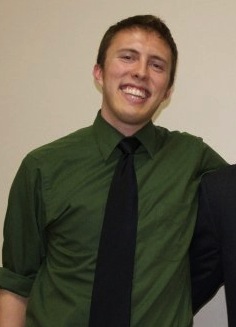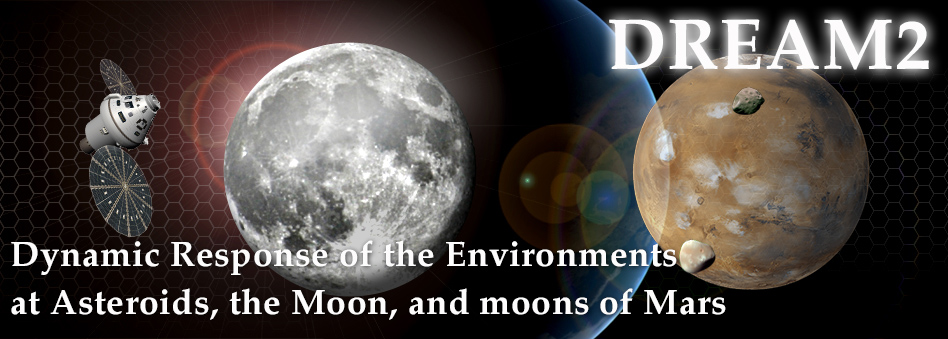Dynamic Response of the Environments at Asteroids, the Moon, and moons of Mars
 |
Andrew Poppe
1. What is your role on the DREAM2 team?
I'm a Co-Investigator at the Space Sciences Laboratory at UC Berkeley. I am part of the DREAM2 Plasma Team looking at how plasmas and electromagnetic fields interact with small bodies, such as the Moon and the moons of Mars.
2. What about DREAM2 do you find most interesting? Most challenging?
One of the things most interesting to me about DREAM2 is finding common physical connections between different bodies in the solar system. There are basic underlying physical principles at work at the Moon and other airless bodies and identifying these "threads" running through Nature is fascinating. The most challenging part is the continual desire for more data. There are certainly great datasets out there - but I'm always thinking, "Oh, if we could send one more spacecraft to answer this question..."
3. Were you a part of the original DREAM team, funded through the NASA Lunar Science Institute? If so, what was your favorite science result?
I was a part of the original DREAM team for two years as a postdoc at UC Berkeley. Perhaps my favorite science result during that time was the measurements of pick-up ions from the lunar exosphere made by ARTEMIS. These measurements allowed us to make some very interesting conclusions and models about the very tenuous (and difficult to measure!) lunar exosphere.
4. What other NASA programs or missions have you participated in?
I've been fortunate to work on a lot of NASA missions. In undergrad, I worked in operations at LASP / Univ. of Colorado at Boulder on QuikSCAT, ICESat, SORCE, AIM, and TIMED. During graduate school, I split my time between working on the Student Dust Counter on the New Horizons mission to Pluto and working as a part of the Colorado Center for Lunar Dust and Atmospheric Studies, one of the original NLSI teams. Since leaving graduate school, I've worked on ARTEMIS and LADEE extensively at UC Berkeley.
5. What kind/level of education do you have?
I have a B.A. in Physics and Mathematics and a Ph.D. in physics, both from the Univ. of Colorado at Boulder.
6. What advice do you have for students who want to work for NASA or on NASA-related research?
The first piece of advice is to learn the fundamentals. Having a solid grounding in math, physics, or engineering is essential to successfully pursuing a research or engineering track. The second piece of advice is to get early research experience. NASA, and in particular SSERVI, are both great at offering opportunities for students to get involved in research. Whether it's through a summer internship at a NASA center, a Research Experience for Undergrads (REU), or working on an undergrad research thesis with an academic advisor, getting some research experience under your belt is a great way to get into the field.
7. What are your favorite things to do outside of work?
Lots of outdoors stuff - I love to go road cycling, hiking, and camping. I also really enjoying reading, everything from historical biographies to sci-fi.


